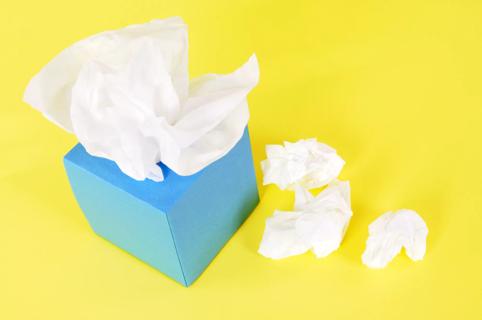Mucus removal tips from a pediatrician

When your child’s too young to blow their nose, the job of getting out excess mucus from allergies or illness falls to you. (The joys of parenting!)
Advertisement
Cleveland Clinic is a non-profit academic medical center. Advertising on our site helps support our mission. We do not endorse non-Cleveland Clinic products or services. Policy
So it’s time to — ahem — “suck it up” and become a mucus removal expert. It’s not a pretty process (or something you thought you’d add to your parental resume), but a job well done will help your child breathe easier and get better rest — and that’s worth it for the whole family.
What’s the best method for clearing your baby’s congestion? “It depends on the child’s age,” says pediatrician Amy Sniderman, MD.
Dr. Sniderman shares her best snot-removal solutions and throws in a tip to help your child learn how to blow their own nose, too!
“A nose that’s clogged with mucus can make it hard for babies to breathe and eat properly — especially for young babies who breastfeed or eat from a bottle,” Dr. Sniderman says.
Keeping excess mucus in check can also ward off skin infections caused by leaking mucus around your child’s nose.
“The best way to remove it is with a handy baby nose sucker device like a nasal aspirator or Swedish snot sucker,” Dr. Sniderman says.
With a nasal aspirator, you create the suction by squeezing the bulb and then putting it gently in your child’s nose and releasing it. With a Swedish snot sucker, you create the suction with your mouth — but a long, thin tube with a membrane over it stands between you and the larger vial that goes in their nose. You and your baby might not love the process, but it works.
Advertisement
In young toddlers, a nasal aspirator or Swedish snot sucker is still your best bet for removing excess mucus, Dr. Sniderman says. But have you ever tried to get a toddler to sit still, let alone sit still for mucus extraction? With a little coaching, you can help your older toddler get the hang of blowing their own nose.
“Just hold a tissue over your child’s nose and tell them to close their mouth and pretend to blow out birthday candles or blow bubbles with their nose,” she says. It might take a few tries for your child to understand the concept, so keep practicing. And don’t despair if they don’t catch on right away — it takes some kids longer to learn.
“Some 2-year-olds can blow their nose, but some kids are much older before they can do it,” Dr. Sniderman says. “It’s kind of a coordination thing — they have to be able to close their mouth and blow out their nose.”
Regardless of your child’s age, if mucus is too thick to remove, Dr. Sniderman suggests using a few drops of over-the-counter saline nasal spray to help thin it out.
A humidifier can also help make mucus removal easier.
Whether you’re still at the snot-sucker stage or your child is learning to blow their own nose, remember to wash your hands afterwards (and remind your child to wash theirs, too) — and frequently, in general.
Washing your hands is the best way to keep illness from spreading, Dr. Sniderman says.
And if your baby or toddler is still experiencing congestion, consult with your pediatrician for further guidance.
Advertisement
Learn more about our editorial process.
Advertisement

It’s usually the way your nose manages airflow, but sometimes, it could be other issues

Correct positioning is one of the keys to getting the best results

Why being intimate can lower congestion

Too much screen time and unrealistic expectations and perceptions and can lead to an increased risk of anxiety and depression

They’re nontoxic, but crayons can cause an upset stomach and pose a serious choking hazard

Sneezing, coughing and clear mucus shouldn’t be ignored

Sailing between parenting styles in specific situations is key

Caring for your own well-being and setting manageable expectations can dispel that feeling

Type 2 diabetes isn’t inevitable with these dietary changes

Applying a hot or cold compress can help with pain